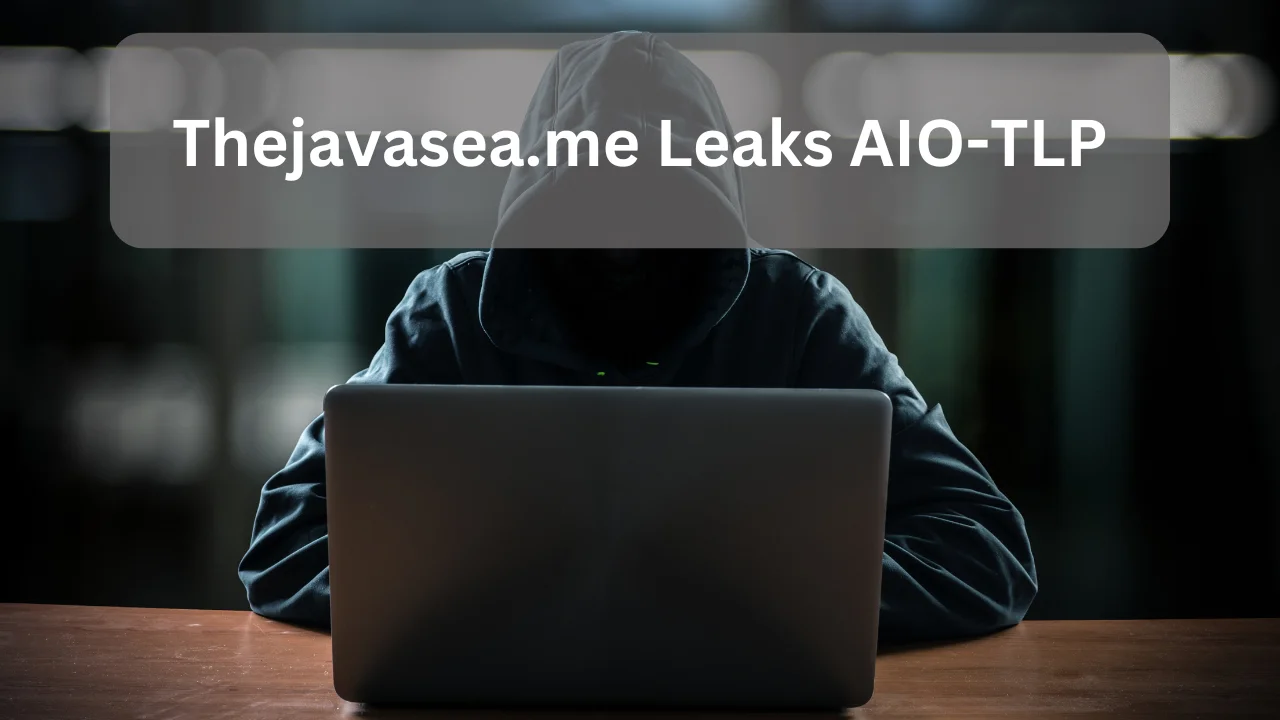The frequency and sophistication of cybersecurity breaches are on the rise, making them a greater threat to organizations around the globe. Leaks like Thejavasea.me Leaks AIO-TLP, involving the Java SE Threat Landscape Profile (AIO-TLP), have shaken up the cybersecurity industry. An essential tool for security researchers and penetration testers has been made vulnerable to abuse as a result of this breach. This article will explain what AIO-TLP is, discuss the consequences of this leak, and offer advice on how organizations can lessen the impact of this security breach.
What is AIO-TLP? Getting a Feel for the Instrument Behind the Leak
The All-In-One Threat Landscape Profile, or AIO-TLP for short, is an effective cybersecurity tool for finding weak spots in computer networks. Designed with penetration testers and cybersecurity experts in mind, this tool lets users practice cyberattack simulations and find vulnerabilities in databases, apps, and networks. When it comes to cybersecurity, AIO-TLP is priceless for both offense and defense due to how well it scans systems for exploitable vulnerabilities.
Regrettably, this tool is no longer accessible to genuine security professionals due to its unauthorized exposure on thejavasea.me. With this newfound accessibility, cybercriminals and other bad actors may launch an upsurge in their attacks.
How Did the AIO-TLP Leak Occur?
If we want to stop future breaches like this one, we need to know how it happened. A security hole in the backend system of thejavasea.me, a platform that hosts a variety of security-related resources, allowed the AIO-TLP tool to be leaked. The platform’s security measures were evaded by the attackers, who took advantage of a vulnerability to steal sensitive data and the AIO-TLP tool.
Cybersecurity Breach AIO-TLP Accident
Exploiting Security Flaws in AIO-TLP
The risk that malevolent actors may take advantage of the AIO-TLP leak is a major cause for concern. Despite AIO-TLP’s good intentions, it could be exploited by malicious actors who do not have proper authorization to use it. Organizations must strengthen their defenses because the tool can be used to launch highly targeted and sophisticated attacks.
Impact of the AIO-TLP Leak on Global Cybersecurity
In response to the AIO-TLP leak, the cybersecurity community around the world has moved quickly. In light of recent security breaches, businesses of all stripes are taking stock of their defenses and adjusting as needed. This leak could have far-reaching consequences because AIO-TLP finds hidden vulnerabilities that bad guys can exploit.
Preventing AIO-TLP Exploitation
Companies need to stop people from taking advantage of AIO-TLP right now. As part of this process, it is necessary to update security patches frequently, execute security audits, and use stronger authentication methods. Cyberattacks that exploit AIO-TLP can be lessened if companies maintain a state of constant vigilance and preventative action.
Concerns regarding illegal access to AIO-TLP have been heightened by the leak. The exposure of this tool on the dark web could allow hackers to abuse it for illegal activities, despite its intended use for legitimate purposes. In order to be ready for anything, businesses should strengthen their cybersecurity measures and make sure their systems can withstand the kinds of attacks that AIO-TLP can enable.
Key Risks of the AIO-TLP Leak for Organizations
There are serious dangers linked to the AIO-TLP leak. Data breaches, financial losses, and reputational damage could befall organizations if this tool fell into the wrong hands. Key risks include the following:
1. The Theft of Data
With the help of AIO-TLP, hackers can find security holes in a system and steal sensitive information. There is a risk that confidential information like client records, financial data, and IP could be stolen and sold illegally.
2. Advanced Cyber Attacks
Cyber Criminals can use the AIO-TLP tool to conduct complex attacks, such as phishing, ransomware, and denial-of-service (DoS) attacks. An organization’s operations, finances, and reputation can all take a hit from these kinds of attacks.
3. Taking Advantage of Security Hole
Hackers can use AIO-TLP to find software and hardware flaws and exploit them. There is a risk that this may cause disruptions in systems, illegal access, or even physical harm to vital infrastructure.
4. Losses in Funds and Reputation
Significant monetary losses may ensue from a cyberattack that is successfully executed with the help of AIO-TLP. When consumers and clients lose faith in an organization’s security measures, it can have a negative impact on the company’s reputation.
Attacks Employing AIO-TLP in Cyberspace
There is rising anxiety that the frequency and severity of cyberattacks using AIO-TLP will escalate following its leak. The newly released AIO-TLP makes it easier for hackers to probe networks for security flaws, conduct attacks, and acquire unauthorized access to systems. Therefore, companies should not waste any time in securing their networks and protecting their confidential information.
Steps to Secure Systems After the AIO-TLP Leak
System security following the AIO-TLP leak necessitates an all-encompassing strategy. In addition to fixing the flaws found by the tool, businesses should fortify their security measures to ward off hacking in the future. Here are a few things that businesses can do:
1. Perform audits to ensure security
In order to find any vulnerabilities that the AIO-TLP tool may have revealed, conduct a comprehensive audit of your organization’s security infrastructure. Take immediate action to fix these vulnerabilities so they can’t be exploited.
2. Introduce One-Time Password (OTP)
Implementing multi-factor authentication is a highly effective security measure to prevent unauthorized access. By lowering the threshold for successful attacks, multi-factor authentication (MFA) adds an additional degree of protection by making users prove their identity through numerous channels.
3. Apply Security Patches
On A Regular Basis Make sure that all systems and software are running the most recent versions with all available security patches. Keeping AIO-TLP up-to-date can help protect against security flaws that hackers could exploit.
4. Make the Network More Secure
Firewalls, intrusion detection systems (IDS), and intrusion prevention systems (IPS) can greatly improve your company’s network security. By taking these precautions, possible dangers can be identified and prevented before they cause damage.
5. Train Staff Members
The best way to protect against cyberattacks is to educate your employees. Give people the tools they need to stay safe online by teaching them to spot phishing emails, create complex passwords, and stay away from questionable links.
Lessons Learned from the AIO-TLP Leak
The fact that cybersecurity threats are always changing is brought to light by the AIO-TLP leak on thejavasea.me. It highlights the significance of being alert and the necessity for organizations to consistently adjust to emerging digital threats. The breach taught us the following important lessons:
1. Security Flaws Can Affect Any System
Attacks can still compromise even cybersecurity-focused platforms, such as thejavasea.me. Companies should make security a top priority across the board and operate under the assumption that no system is completely safe.
2. Audits Must Be Performed Regularly
To find security holes before they can be used, it is essential to conduct audits on a regular basis. It is important for organizations to regularly audit themselves and make defense adjustments as needed.
3. The Value of Multiple Layers of Protection
To ward off sophisticated attacks, you need more than just one security measure. Several layers of protection, such as firewalls, encryption, and multi-factor authentication (MFA), should be put in place by organizations.
FAQs:
1. What is the AIO-TLP tool?
AIO-TLP (All-In-One Threat Landscape Profile) is a penetration testing tool designed to identify vulnerabilities within digital systems, used by cybersecurity professionals.
2. How did the AIO-TLP leak happen on thejavasea.me?
The AIO-TLP tool was leaked due to a vulnerability in thejavasea.me’s backend system, allowing unauthorized individuals to exfiltrate the tool.
3. What are the risks of the AIO-TLP leak for organizations?
Organizations face risks like data theft, financial losses, and cyberattacks as malicious actors can now exploit vulnerabilities using AIO-TLP.
4. How can organizations protect themselves after the AIO-TLP leak?
They should conduct security audits, implement multi-factor authentication, update patches, and educate employees on cybersecurity best practices.
5. Can the AIO-TLP tool be used for malicious cyberattacks?
Yes, in the wrong hands, AIO-TLP can be used to launch sophisticated cyberattacks by exploiting system vulnerabilities.
Also Read: Ztec100.com: All About Tech, Health, and Insurance
Conclusion
Even the most robust security measures can be compromised, as Thejavasea.me Leaks AIO-TLP incident demonstrated. Companies need to beef up their cybersecurity measures to keep up with hackers who are getting better tools. Cyberattacks are on the rise, but companies can protect themselves by performing frequent audits, using multi-factor authentication, and keeping up with emerging threats. Cybersecurity is an ever-evolving field that demands unshakable focus and alertness, as the AIO-TLP leak has shown.
Our exploration of practical tactics for reducing the impact of the AIO-TLP leak and the ways in which organizations are adjusting to this emerging danger will continue in the following sections of this article.

Stephen Norman is a skilled and accomplished writer known for his versatility across numerous niches. He consistently delivers insightful and engaging content in various fields. Stephen’s extensive experience and profound expertise make him a highly sought-after author in the digital writing sphere.











